
Overview
The food and beverage industry involves the production, processing, distribution, and consumption of food and beverages. It includes agriculture, food processing, manufacturing, restaurants, cafes, bars, and catering services. Key aspects include production, processing, packaging, distribution, retail, consumer trends, food safety, regulations, and innovation. The industry caters to diverse consumer needs while addressing nutrition, sustainability, and food safety concerns.
GAO Tek’s chemical melting point tester has the following applications in food and beverages:
- Quality control of fats and oils: GAO Tek’s melting point tester can be used to assess the purity and consistency of fats and oils used in food production. Different types of oils have specific melting points, and deviations from the expected range may indicate adulteration or improper processing.
- Chocolate production: The melting point of chocolate is a critical parameter that affects its texture, mouthfeel, and stability. By measuring the melting point of chocolate, manufacturers can ensure consistency in their products and maintain the desired quality.
- Dairy industry: The melting point of dairy products, such as butter, can be indicative of their composition and quality. Testing the melting point can help detect any adulteration or contamination issues that might affect the product’s integrity.
- Confectionery products: Our melting point testers is valuable in the confectionery industry for assessing the melting characteristics of ingredients like sugars, fats, and waxes. It helps manufacturers determine the ideal combination of ingredients to achieve desired product attributes, such as the desired melting point for a specific type of candy.
- Beverage formulation: Some beverage formulations may include solid ingredients or additives that have specific melting points. Testing these ingredients can ensure their compatibility with the liquid base and help achieve the desired taste, texture, and appearance in the final product.
- Ingredient screening: Melting point testing can be employed to assess the purity and identify potential contaminants or impurities in food additives, colorants, preservatives, and other ingredients used in the food and beverage industry.
- Product development: During the development of new food and beverage products, melting point testing can help determine the optimal ratios and combinations of ingredients. By measuring the melting points of various formulations, manufacturers can assess their stability, consistency, and overall quality.
Complying with Government Regulations
GAO Tek’s chemical melting point tester complies or help our customers comply with the U.S. government regulations such as:
- Food Safety Modernization Act (FSMA): This landmark legislation, signed into law in 2011, aims to prevent foodborne illnesses by shifting the focus from responding to contamination to preventing it. It includes regulations on preventive controls, hazard analysis, risk-based inspections, and compliance with good manufacturing practices.
- Food and Drug Administration (FDA): The FDA is responsible for regulating the safety and labeling of most food products in the United States. They enforce various regulations, including those related to food additives, labeling, packaging, good manufacturing practices, and overall food safety.
- Hazard Analysis and Critical Control Points (HACCP): HACCP is a systematic approach to identify, evaluate, and control food safety hazards. While it is not a regulation itself, the FDA and the U.S. Department of Agriculture (USDA) require HACCP plans for certain food processors, including those involved in seafood, juice, and meat production.
- United States Department of Agriculture (USDA): The USDA regulates and inspects meat, poultry, and egg products. They establish and enforce standards for the production, labeling, and handling of these products.
- Federal Food, Drug, and Cosmetic Act (FD&C Act): This legislation provides the legal framework for regulating food, drugs, and cosmetics in the United States. It covers areas such as adulteration, misbranding, food labeling, and safety requirements.
- National Institute of Standards and Technology (NIST): NIST is an agency that develops and promotes measurement standards and technologies. While not specific to food and beverage, their work can have relevance to the calibration and accuracy of laboratory instruments, including melting point testers.
- Environmental Protection Agency (EPA): The EPA regulates pesticides, residues, and other environmental contaminants that may impact food safety. They establish tolerances for pesticide residues on food and monitor their compliance.
GAO Tek’s chemical melting point tester comply or help our clients comply with the Canadian regulations such as:
- Canadian Food Inspection Agency (CFIA): The CFIA is responsible for regulating and enforcing food safety standards in Canada. They oversee various aspects of the food industry, including inspection, labeling, packaging, and the control of foodborne hazards.
- Safe Food for Canadians Regulations (SFCR): Implemented by the CFIA, the SFCR sets out the requirements for the safe production, distribution, and importation of food products in Canada. It includes provisions related to preventive controls, traceability, labeling, and import/export activities.
- Food and Drugs Act: The Food and Drugs Act is the primary legislation governing food safety, labeling, and advertising in Canada. It prohibits the sale of unsafe or mislabeled food products and provides the framework for the regulation of food additives, colors, and contaminants.
- Health Canada: Health Canada is the federal department responsible for public health, including food safety. They establish policies, guidelines, and standards related to food safety, nutrition labeling, and health claims on food products.
- Canadian Standards Association (CSA): The CSA develops voluntary standards and certification programs for various industries, including the food and beverage sector. While not specific to melting point testers, they may provide guidelines or standards for laboratory equipment and calibration.
- Provincial and Territorial Regulations: Each province and territory in Canada may have additional regulations and oversight related to food safety, licensing, and inspection. It’s important to consult the specific regulations of the province or territory where the food and beverage business operates.
- Measurement Canada: Measurement Canada, an agency of Innovation, Science and Economic Development Canada, is responsible for ensuring accuracy in measurements used for trade. While not specific to melting point testers, they regulate measurement accuracy in various industries, including food processing.
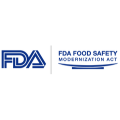 FSMA
FSMA
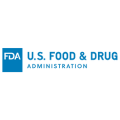 US FOOD & DRUG
US FOOD & DRUG
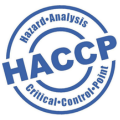 HACCP
HACCP
 USDA
USDA
 FDA
FDA
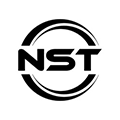 NST
NST
 CFIA
CFIA
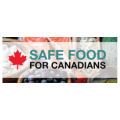 SFCR
SFCR
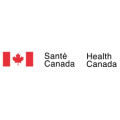 HEALTH CANADA
HEALTH CANADA
 CSA
CSA
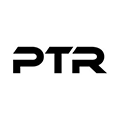 PTR
PTR
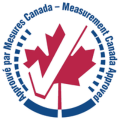 Measurement Canada
Measurement Canada
Case Studies of Chemical Melting Point Tester in Food and Beverage
Here are some practical examples of using chemical melting point tester in food and beverages:
High-performance liquid chromatography (HPLC): HPLC is commonly used to analyze and quantify various components in food and beverages, such as vitamins, flavor compounds, additives, and contaminants.
Gas chromatography-mass spectrometry (GC-MS): GC-MS is utilized for the detection and identification of volatile compounds, including aroma compounds, pesticides, and contaminants in food and beverages.
Spectroscopy techniques: Techniques such as infrared spectroscopy (IR), nuclear magnetic resonance (NMR), and UV-Vis spectroscopy are used for analyzing the chemical composition, identifying functional groups, and determining concentrations of certain components in food and beverages.
Polymerase chain reaction (PCR): PCR is employed for the detection of specific DNA sequences, allowing for the identification of genetically modified organisms (GMOs), pathogens, or allergens in food products.
Mass spectrometry (MS): MS is used to analyze and identify compounds in complex food matrices, including the detection of contaminants, identification of flavor compounds, and authentication of food origin.
The main page of the chemical melting point tester has more information on GAO’s Chemical melting point tester and their applications in various industries: Chemical Melting Point Testers
Use of Chemical Melting point Tester with Leading Software and Cloud Services in Food and Beverages
GAO Tek has used or has facilitated its customers to use GAO’s chemical melting point tester with some of the leading software and cloud services in their applications. Examples of such leading software and cloud services include
- Data Acquisition Software: This type of software allows users to collect and record data from the melting point tester during the testing process. It often includes features such as real-time temperature monitoring, data logging, and data export capabilities.
- Analysis and Reporting Software: Software tools designed for data analysis and reporting can assist in analyzing the melting point data obtained from the instrument. These tools may provide features like data visualization, statistical analysis, and the generation of comprehensive reports.
- Calibration Software: Calibration software helps ensure the accuracy and reliability of the melting point tester by facilitating calibration procedures. It may include step-by-step calibration instructions, data management for calibration records, and reminders for calibration intervals.
- Instrument Control Software: Some melting point testers can be controlled and programmed using dedicated software. This software enables users to set up specific testing parameters, define temperature ramps, and customize test protocols according to their requirements.
- Database Management Software: In larger food and beverage operations, where multiple melting point testers may be used, database management software can help organize and manage melting point data from various instruments. It allows users to store, search, and retrieve data efficiently, facilitating quality control and traceability.
- Connectivity and Integration: Melting point tester software may offer connectivity and integration features, allowing seamless integration with other laboratory or quality control systems. This can include compatibility with laboratory information management systems (LIMS) or the ability to export data in standardized formats for further analysis or integration with other software platforms.
- Melting Point Analysis Software: Many melting point testers come with built-in software for analyzing melting point data. This software allows users to input the data obtained from the instrument and provides tools for data visualization, curve fitting, statistical analysis, and reporting.
- Statistical Analysis Software: General-purpose statistical analysis software packages, such as SPSS, Minitab, or R, can be used to analyze melting point data. These software tools provide advanced statistical techniques for data exploration, hypothesis testing, correlation analysis, and multivariate analysis.
- Data Visualization and Graphing Software: Data visualization software, such as Tableau, Excel, or Origin, can be used to create visual representations of melting point data. These tools enable users to generate graphs, charts, and plots to visualize the melting point trends, compare multiple samples, and identify any outliers or abnormalities.
- Curve Fitting Software: Curve fitting software, such as MATLAB or Sigma Plot, can be employed to fit mathematical models or equations to the melting point data. This enables users to determine parameters like melting point ranges, transition temperatures, and other relevant characteristics of the samples.
- Amazon Web Services (AWS): AWS offers various cloud services that can be utilized for data storage, processing, and analysis in the context of a Chemical Melting Point Tester. Services like Amazon EC2, Amazon S3, and Amazon Redshift can handle large volumes of data, perform real-time analytics, and enable secure data storage.
- Microsoft Azure: Azure provides a range of cloud services suitable for application scenarios involving a Chemical Melting Point Tester. Services like Azure Machine Learning, Azure Functions, and Azure Storage can assist with data analysis, real-time processing, and secure storage of test results.
- Google Cloud Platform (GCP): GCP offers services such as Google Cloud Functions, Google Cloud Storage, and Google BigQuery that can be leveraged for application development with a Chemical Melting Point Tester. These services enable data processing, secure storage, and analysis of test results.
- IBM Cloud: IBM Cloud provides services like IBM Watson Studio, IBM Cloud Functions, and IBM Cloud Object Storage, which can be utilized for data analysis, real-time processing, and secure storage of test data from a Chemical Melting Point Tester.
- Oracle Cloud Infrastructure (OCI): OCI offers services such as Oracle Functions, Oracle Object Storage, and Oracle Autonomous Data Warehouse that can support application scenarios involving a Chemical Melting Point Tester. These services enable data processing, secure storage, and analysis of test results.
- Alibaba Cloud: Alibaba Cloud offers services such as Max Compute, Function Compute, Data Works, and IoT Platform. These services can be used for data analysis, real-time processing, and IoT integration for Chemical Melting Point Testers in food and beverage applications.
- SAP Cloud Platform: SAP Cloud Platform provides services like SAP HANA, SAP Data Intelligence, and SAP IoT. These services offer capabilities for data processing, analytics, and IoT integration, enabling monitoring and analysis of Chemical Melting Point Testers in the food and beverage industry.
- Salesforce IoT Cloud: Salesforce IoT Cloud allows you to capture, analyze, and respond to data from IoT devices, including Chemical Melting Point Testers. It provides features like real-time event processing, device data management, and analytics for food and beverage applications.
- GE Predix: GE Predix is a cloud platform specifically designed for industrial applications. It offers capabilities for data collection, analytics, and monitoring of industrial equipment, including Chemical Melting Point Testers used in the food and beverage industry.
- Siemens Mind Sphere: Siemens Mind Sphere is an open IoT operating system that provides services for collecting, analyzing, and visualizing data from industrial equipment. It can be used for monitoring and analysis of Chemical Melting Point Testers in the context of food and beverage analysis.
GAO Tek Has Many Customers in Food and Beverages
GAO Tek’s chemical melting point tester have been used by many customers in food and beverage industry including some leading companies.
Here are some of the leading companies in food and beverage :
 Coco cola
Coco cola
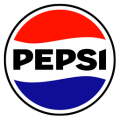 Pepsi
Pepsi
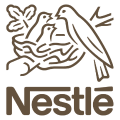 Nestle
Nestle
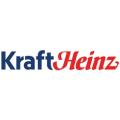 Kraft Heinz
Kraft Heinz
 Tyson Food
Tyson Food
 General mills
General mills
 Mars
Mars
 Smuckers
Smuckers
 Kelloggs
Kelloggs
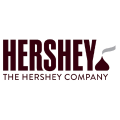 Hersheys
Hersheys
 Mondelez
Mondelez
 Conagra
Conagra
 Kroger
Kroger
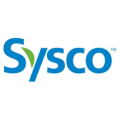 Sysco
Sysco
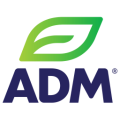 ADM
ADM
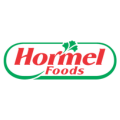 Hormel
Hormel
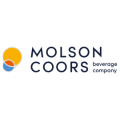 Molson coors
Molson coors
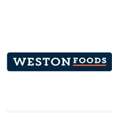 Weston foods
Weston foods
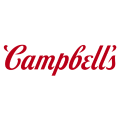 Campbells
Campbells
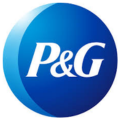 P&G group
P&G group
 Saputo
Saputo
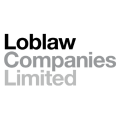 Loblaw companies
Loblaw companies
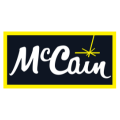 Mc Cain
Mc Cain
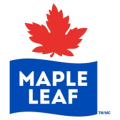 Maple leaf
Maple leaf
GAO Tek’s melting point testers and their applications in other industries are listed on this page:
Chemical Melting Point Testers
